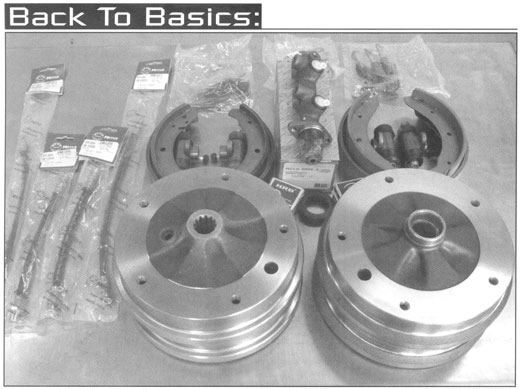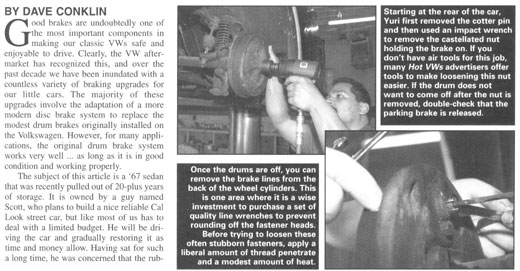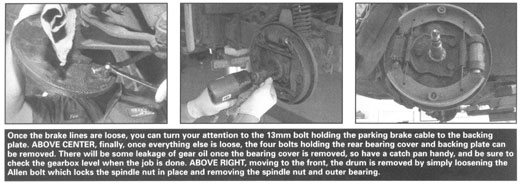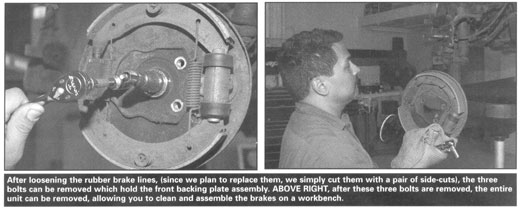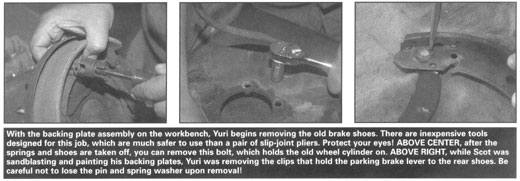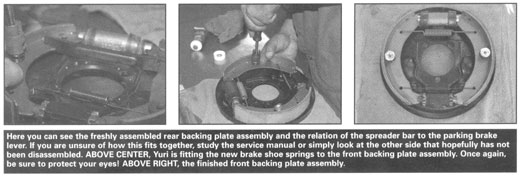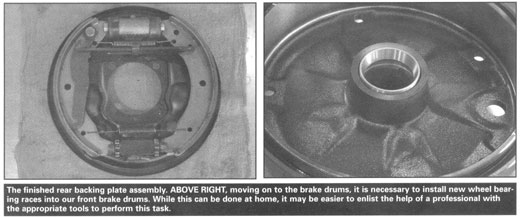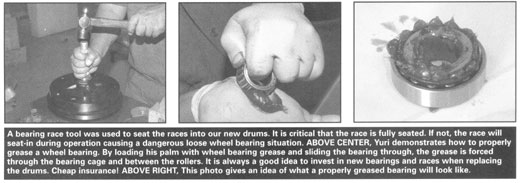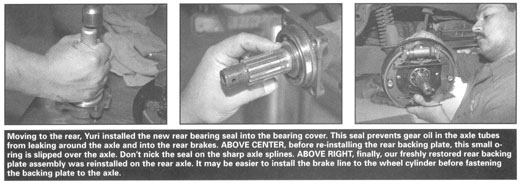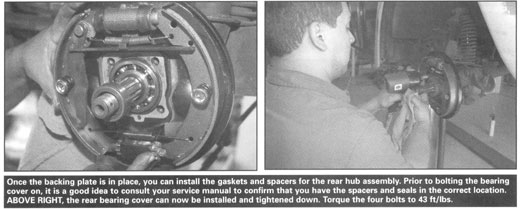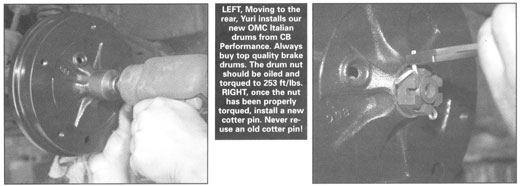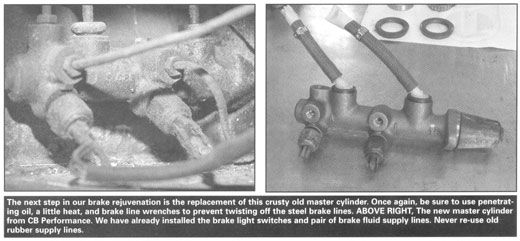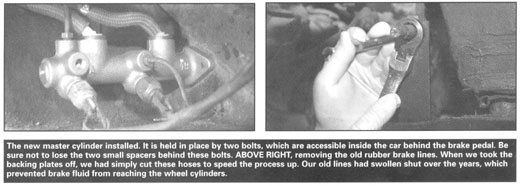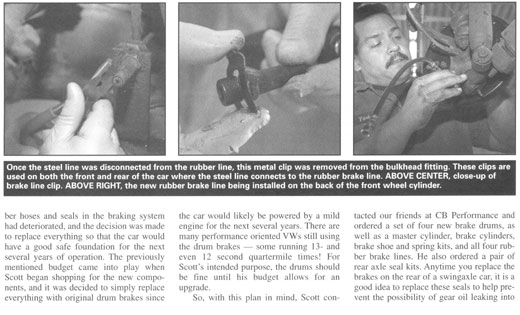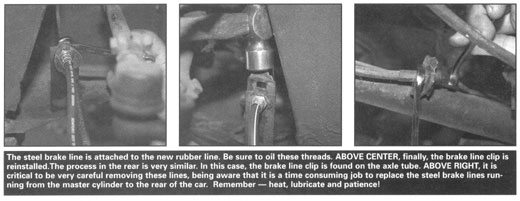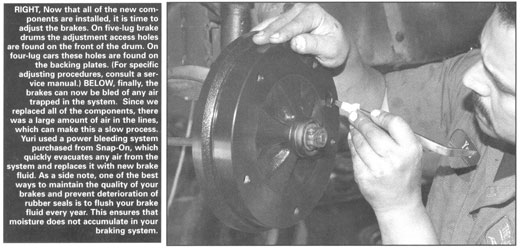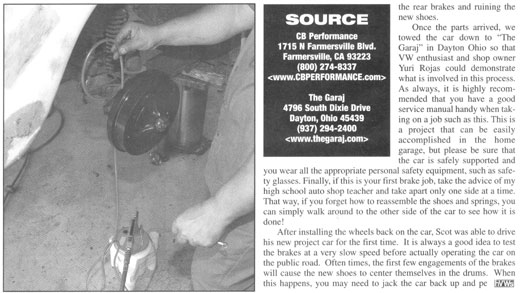|
Hot VW's - September 2005 - Drum Restoration Replacing a worn stock brake system - from start to finish
DRUM RESTORATION Replacing a worn stock brake system - from start to finish BY DAVE CONKLIN Good Brakes are undoubtedly one of the most important components in making our classic VWs safe and enjoyable to drive. Clearly, the VW aftermarket has recognized this, and over the past decade we have been inundated with a countless variety of braking upgrades for our little cars. The majority of these upgrades involve the adaption of a more modern disc brake system to replace the modest drum brakes originally installed on the Volkswagen. However, for many applications, the original drum brake system works very well... as long as it is in good condition and working properly. The subject of this article is a '67 sedan that was recently pulled out of 20-plus years of storage. It is owned by a guy named Scott, who plans to build a nice reliable Cal-Look street car, but like most of us has to deal with a limited budget. He will be driving the car and gradually restoring it as time and money allow. Having sat for such a long time, he was concerned that the rubber hoses and seals in the braking system had deteriorated, and the decision was made to replace everything so that the car would have a good safe foundation for the next several years of operation. The previously mentioned budget came into play when Scott began shopping for the new components, and it was decided to simply replace everything with original drum brakes since the car would likely be powered by a mild engine for the next several years. There are many performance oriented VWs still using the drum brakes - some running 13- and even 12 second quartermile times! For Scott's intended purpose, the drums should be fine until his budget allows for an upgrade. So, with this plan in mind, Scoot contacted our friends at CB Performance and ordered a set of four new brake drums, as well as a master cylinder, brake cylinders, brake shoes and spring kits, and all four rubber brake lines. He also ordered a pair of rear axle seal kits. Anytime you replace the brakes on the rear of a swing axle car, it is a good idea to replace these seals to help prevent the possibility of gear oil leaking into the rear brakes and ruining the new shoes. Once the parts arrived, we towed to car down to "the Garaj" in Dayton, Ohio, so that VW enthusiast and shop owner Yuri Rojas could demonstrate what is involved in this process. As always, it is highly recommended that you have a good service manual handy when taking on a job such as this. This is a project that can be easily accomplished in the home garage, but please be sure that the car is safely supported and you wear all the appropriate personal safety equipment, such as safety glasses. Finally, if this is your first brake job, take the advice of my high school auto shop teacher and take apart only one side at a time. That way, if you forget how to reassemble the shoes and springs, you can simply walk around to the other side of the car to see how it is done! After installing the wheels back on the car, Scott was able to drive his new project car for the first time. It is always a good idea to test the brakes at a very slow speed before actually operating the car on the public road. Often times, the first few engagements of the brakes will cause the new shoes to center themselves in the drums. When this happens, you may need too jack the car back up and pe (article ends abruptly) |
